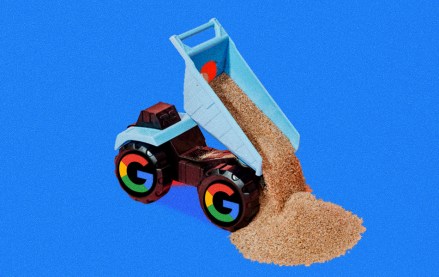2018 will be a pivotal year for Facebook’s video ambitions

Last February, during an earnings call with investors, Facebook CEO Mark Zuckerberg outlined why his company was making significant investments in video: “I see video as a megatrend,” Zuckerberg said. “That’s why I’m going to keep putting video first across our family of apps.”
Heeding his word, Facebook ramped up the investment it was making in video throughout the year. Even more so than it did in 2016, when Facebook first started paying publishers and other video makers to create content, Facebook poured a lot of money into becoming a video destination that could rival existing giants such as YouTube and Netflix. In a wave that was reminiscent of how Verizon started cutting checks for its Go90 streaming service, Facebook bought a lot of original content to populate its new YouTube-esque video-viewing section Watch.
But as Verizon has learned with Go90 and Facebook itself learned with its failed efforts to make Facebook Live happen, just because you build something, it doesn’t mean viewers will come in droves. Plenty of Watch shows have the high view counts that the industry has become accustomed to thanks to Facebook’s three-second view metric, but a significant majority of these views are still happening within the news feed, according to multiple publishing sources. As much as Facebook wants users to go to Watch, users haven’t obliged — which has prompted Facebook to push for even bigger projects with bigger budgets for Watch.
But while Facebook has the money to spend — and reportedly plans to spend a billion dollars through 2018 to make its video dreams a reality — the checkbook alone doesn’t build a video-streaming platform. Zuckerberg might envision Facebook as a video-first company in the future, but how Facebook’s video efforts fare in 2018 will do a lot to decide what type of video company Facebook becomes.
Is Facebook trying to be YouTube? Or Netflix?
When Facebook first started licensing shows for Watch, it was primarily seeking short-form series — something Zuckerberg himself acknowledged during the same February earnings call. Facebook declined to specify how many shows it has funded, but it’s safe to say Facebook has commissioned well over a hundred shows from partners that include Attn, BuzzFeed, Group Nine Media, Mashable and Vox Media. A large majority of these shows broadly fit within the unscripted and lifestyle genres — formats that are cheap to produce and appear all over YouTube.
That approach hasn’t panned out for Facebook, which is now telling video sellers it wants bigger shows with bigger budgets in 2018.
“It was very clear that the goal was to kind of build a YouTube-esque video network off the back of the news feed — and that failed,” said a publishing executive at a Watch partner. “They confessed that they were working with a lot of people who did not know how to produce quality video. So now, it’s ‘we don’t want to build YouTube on the back of Facebook, we want to build Netflix on the back of Facebook’ — that’s a far more difficult proposition to be successful at, and it’s a hell of a lot more costly.”
More so than getting users to regularly go to the Watch section on their computers or smartphones, Facebook’s success in this area hinges on convincing people to fire up the Facebook app for connected TV devices. People still want to watch TV shows on TV-sized screens, and that is something they simply do not expect from Facebook right now.
“They are nowhere near being able to do that,” said another Watch partner. “But they definitely seem to be trying to figure out a video model that can support OTT and be the next version of something like a Hulu or Netflix.”
But how committed is Facebook, really?
Facebook has already said it doesn’t want to fund shows forever. During the same investors call in which Zuckerberg discussed his video ambitions, Facebook CFO David Wehner stressed that eventually Facebook would like to move to a revenue-sharing model for Watch content. A Wall Street Journal report in the fall said Facebook was willing to spend up to $1 billion on content through 2018, but there are no indications yet of whether Facebook would continue spending money on shows in 2019 and beyond.
Unsurprisingly, plenty of Watch partners expressed hope that Facebook would continue funding content, but also acknowledged that could change — just look at what happened to the Facebook news feed and Live licensing deals.
These moves have created a growing resentment among publishers that can’t completely quit Facebook but are at least considering pulling back on how much they publish to Facebook. One executive at a top news publisher that was part of the Live deals said his outlet plans to cut down how much it publishes to Facebook in 2018. Another executive at a major TV media company said outside of a couple of digital brands in his portfolio, he’s not thinking about Facebook too often.
“Facebook has to prove that they can launch a product that actually works for publishers,” said the TV executive. “[Because] right now, if you’re not making the amount of money that you should on doing content for Facebook, or if by being on Facebook it undercuts the value you get out of your [owned-and-operated platforms], then why are you publishing there?”
In 2018, Facebook video will be …
Ultimately, Facebook will be in the video business — but not necessarily with publishers as partners. Take, for instance, Facebook’s interest in live sports, which the company is reportedly willing to spend billions of dollars to stream. If Facebook scores a deal with the NFL or NBA, even if it’s on a nonexclusive basis — which is far more likely than Facebook setting up its own studio and broadcast operations — then Facebook will have the high-value video content that it can sell ads against at premium rates.
One group that will be left out of those deals? Publishers.
That’s why many of the publishers and studios making shows for Facebook today hope the company remains an original content buyer beyond 2018. But even here, as Facebook solicits projects that cost hundreds of thousands of dollars to a million dollars per episode, video makers will face a dilemma: Do you continue selling to Facebook and be satisfied with the production margin a producer can make on a show, or do you look to shop elsewhere (if there are even any places left to buy shows)?
“This is not going to happen overnight; it’s going to take years and Facebook willing to spend billions of dollars,” said a longtime Hollywood studio executive who has sold a show to Facebook. “I think Facebook is aware of that, and from what we’re hearing from their executives, they’re committed to this — until they’re not.”
All signs point to Facebook favoring a video business that allows Facebook to make money from video advertising. So far, Facebook has not allowed media companies to sell advertising against their shows. According to an ad buyer at a major agency, Facebook didn’t give him the ability to buy individual shows or publishers within Watch but instead wanted the agency to increase overall spend, some of which would be allocated toward Watch.
Recent reports suggest Facebook is willing to loosen its grip on ad slots within Watch. And some of the bigger TV networks and studios certainly have the clout to demand some form of ownership over the programming they make for Facebook.
But that only works if people go to Facebook to watch TV.
“It is a long road to teach people that there are 20-minute shows on this platform,” said the Hollywood executive. “It’s not the same thing as scrolling through your news feed and watching some prank video.”
More in Media

AI Briefing: How political startups are helping small political campaigns scale content and ads with AI
With about 100 days until Election Day, politically focused startups see AI as a way to help national and local candidates quickly react to unexpected change.

Media Briefing: Publishers reassess Privacy Sandbox plans following Google’s cookie deprecation reversal
Google’s announcement on Monday to reverse its plans to fully deprecate third-party cookies from its Chrome browser seems to have, in turn, reversed some publishers’ stances on the Privacy Sandbox.

Why Google’s cookie deprecation reversal isn’t actually a reprieve for publishers
Publishers are keeping a “business as usual” approach to testing cookieless alternatives despite Google’s announcement that it won’t be fully deprecating third-party cookies after all.








